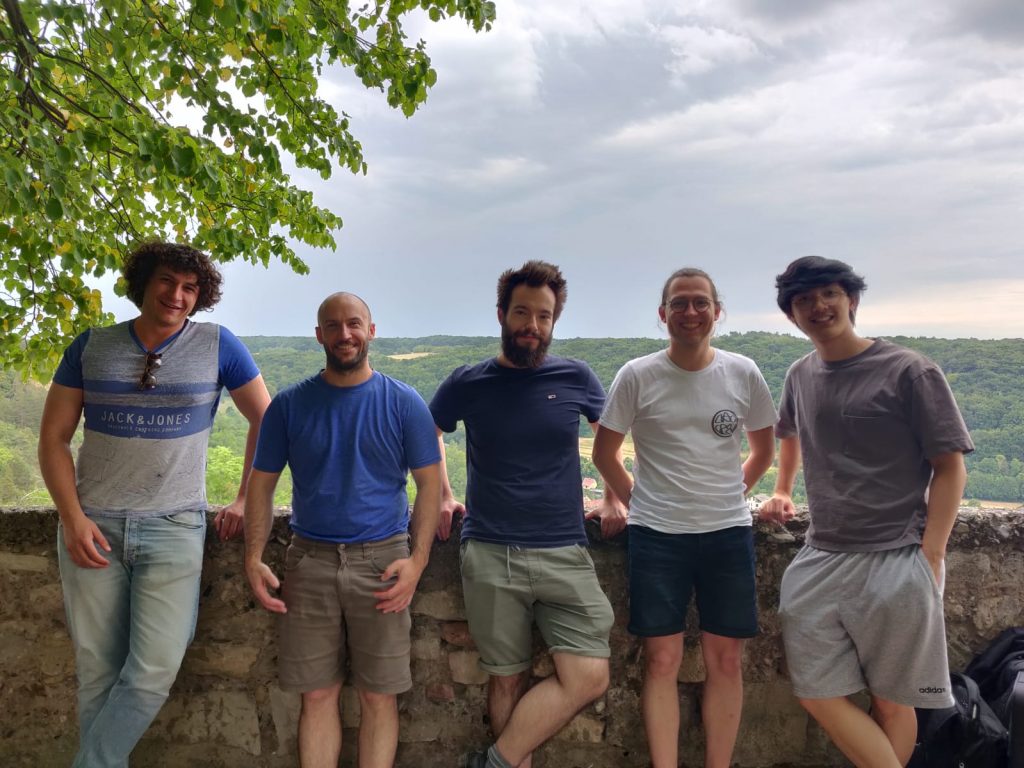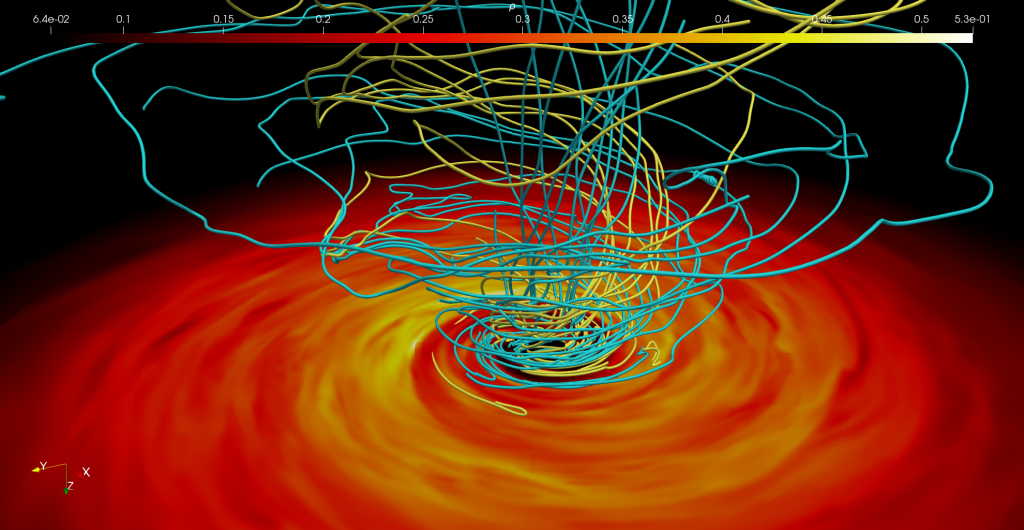October 2022 marks the first anniversary of our beloved project JETSET. On such a historic occasion, it’s my honour to look back on our activities in the past year and come out with a summary of the fantastic work we have done. The main research related to JETSET can be divided into two categories: global work under the Event Horizon Telescope (EHT) Collaboration, concerning the imaging of the supermassive black hole in the Galactic center; local work mostly carried out by my colleagues in Frankfurt, on a variety of topics.
Global EHT Work
In May 2022, the EHT Collaboration presented the first results from the observations of the Galactic center source Sagittarius A* (Sgr A*) conducted in April 2017. They obtained an image dominated by a bright, thick ring spanning 51.8 micro-arcsec with azimuthal brightness asymmetry and dim interior. The image is consistent with the theoretical prediction for a black hole of 4 million solar mass.
The observations constrained feasible models for Sgr A* to be a spinning black hole with a prograde accretion disk, viewed at a low inclination angle. This is the first ever direct evidence for a supermassive black hole residing in the Galactic center. A comparison with the M87* results in 2019 proved the consistency of general relativity across mass scales.

Credit: The Event Horizon Telescope Collaboration (2022)

Frontiers in Numerical Relativity 2022
At the end of July, the Frontiers in Numerical Relativity (FNR) international conference was held in Jena. The conference aims to assess the state-of-the-art and point out future directions of numerical relativity in light of the breakthroughs in observations of gravitational waves and astrophysical counterparts. A number of experts and scholars coming from different countries joined the FNR to share their current results and opinions on the topic. Without a doubt, we have five members of our group joined the conference and have given talks and presentations to describe a variety of topics related to numerical radiation hydrodynamics, viscous hydrodynamics, the results of simulation of binary neutron star postmerger as well as the new initial data spectral solver – FUKA.
Local Work at ITP
At the beginning of this year, a number of ITP researchers performed 3D GRMHD simulations of black hole accretion and jet launching, to provide a theoretical interpretation of the EHT and VLBI observations of M87. By computing the radiative signatures of the simulations and including different particle distributions, they found successful models to account for the broad-band spectrum and innermost jet structure of M87, being magnetically arrested disks (MAD) around fast-spinning black holes, mixed with thermal and non-thermal electrons.

Credit: Fromm et al. (2022)

Credit: Duque et al. (2022)
In June, my colleague Dr. Raphaël Duque and collaborators developed an explanation model for the flaring activity in X-ray afterglows of gamma-ray bursts, as seen by slightly misaligned observers to structured jets. The flares are suggested as prompt dissipation within the jet’s core, appearing in the afterglow due to light travel delays. They managed to fit this model to two observational flares with different morphology, and confirmed the ejection time being a critical parameter.
A simultaneous research by Dr. Prashant Kocherlakota and Prof. Luciano Rezzolla explored the model degeneracy in the interpretation of black hole images. Using the Rezzolla-Zhidenko parameterisation of spherical symmetric black holes, they investigated the impact of varying geometry and emission coefficients, validating the emergence of degeneracy in the model parameter space from shadow-size measurements. The degeneracies can be appropriately constrained or possibly eliminated.
Another work led by L. Jens Papenfort quanitatively studied the impact of high spins and large mass asymmetries on the gravitational wave signals produced in neutron star merger events, based on numerical relativity simulations with self-consistent equations of state. They found significant differences in the post-merger properties, which can help to remove the degeneracy in the progenitor models.

Credit: Nathanail et al. (2022)
In the summer, visitors at ITP, Antonios Nathanails and Vasilis Mpisketzis published their results on 3D GRMHD simulations of magnetic reconnection in accretion flows around black holes. With an initial dipolar magnetic-field configuration, the simulations led to rapid form and destroy of current sheets, and creation of plasmoids close to the event horizon. They also explored the magnetic dissipation and energy transfer, showing that magnetic connection heats up plasmoids to be energetic enough to leave the black hole. The plasmoids can situationally reach super-Keplerian azimuthal velocity, a feature found in Sgr A* flare observations.